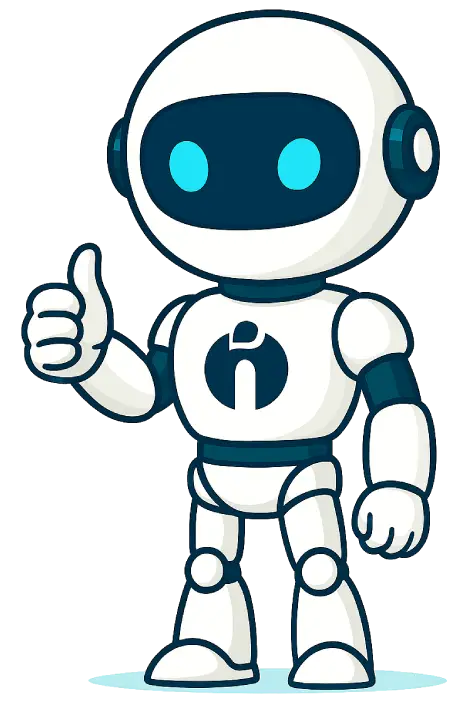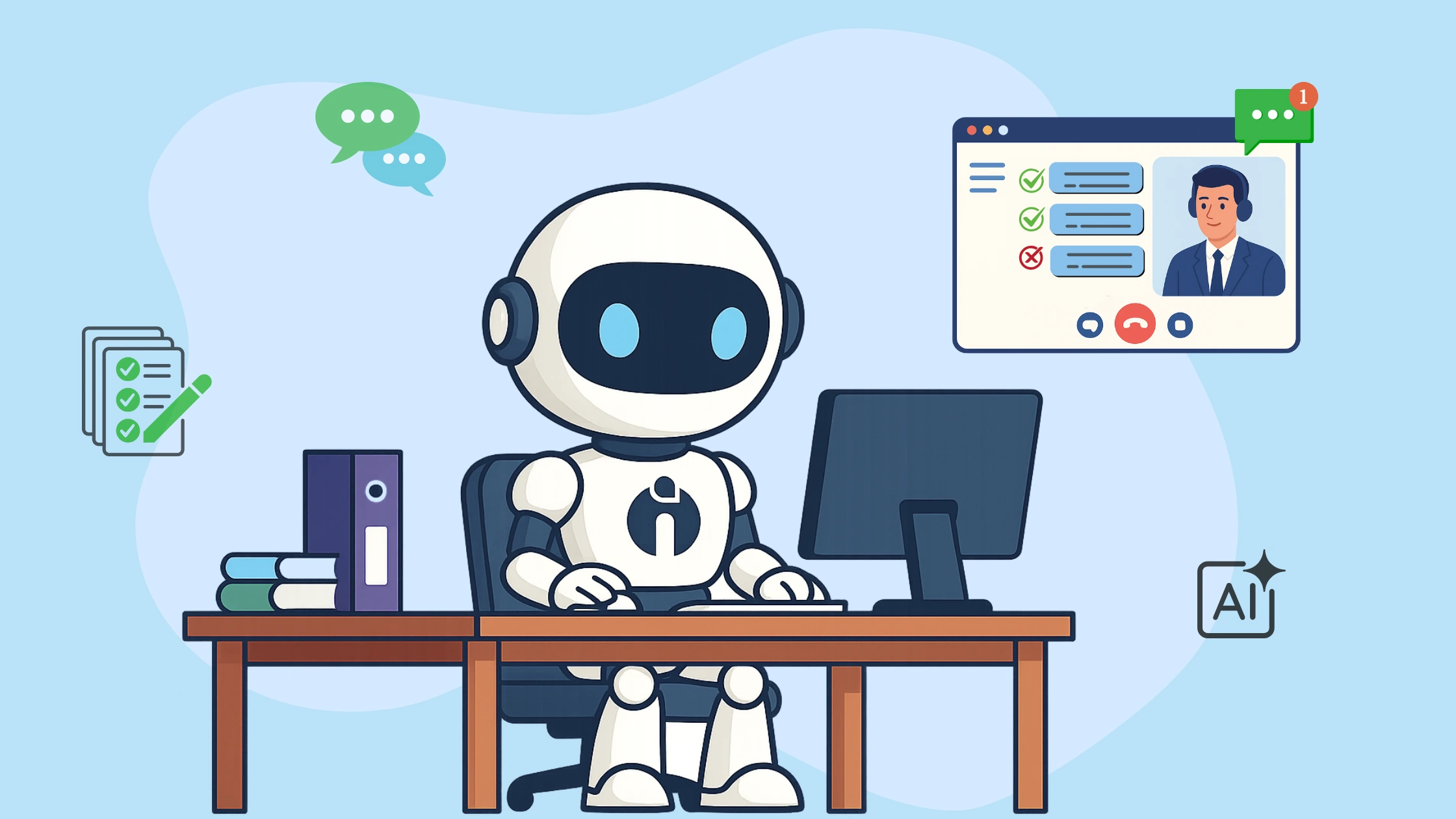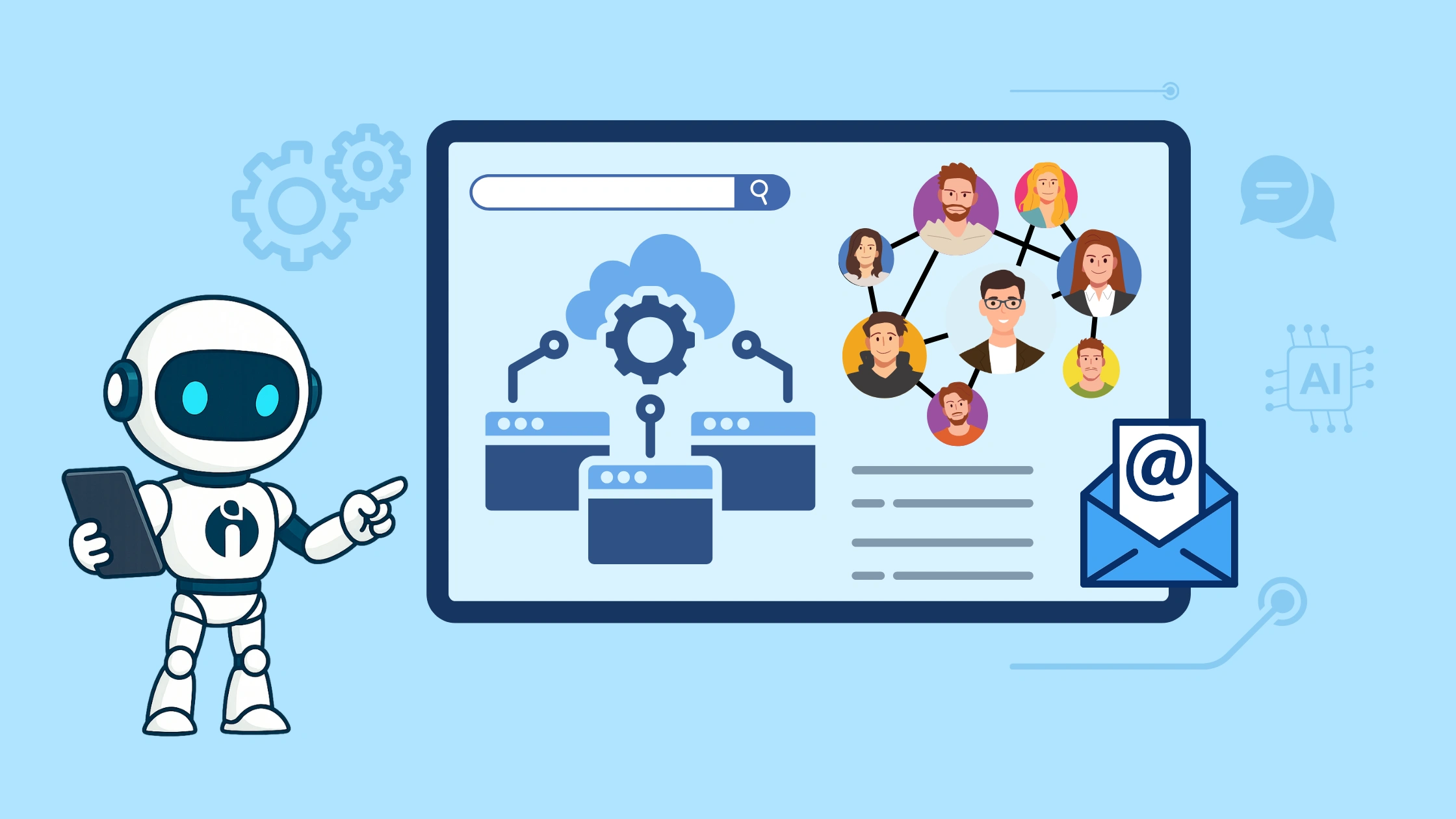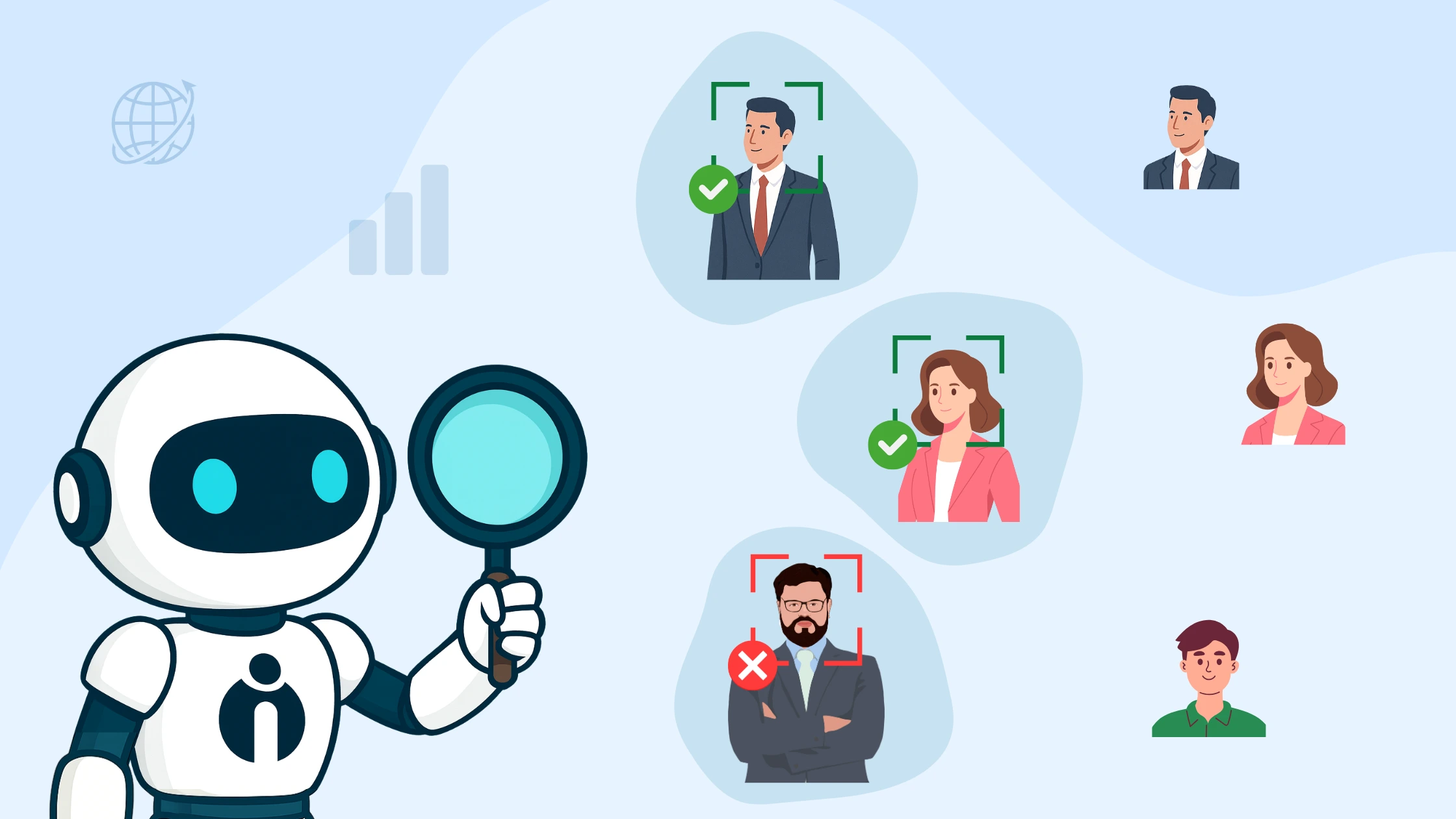TL;DR
- Understanding and optimising the candidate journey is essential for attracting and retaining top talent in 2026.
- The journey spans multiple stages: sourcing, engagement, assessment, offer, and onboarding, each requiring strategic focus.
- Key challenges include talent shortages, candidate ghosting, recruitment bias, inefficient processes, and retention issues.
- Technology such as AI, ATS, chatbots, and predictive analytics significantly streamline recruitment and enhance candidate experience.
- Tracking metrics like time-to-hire, offer acceptance rate, and candidate satisfaction helps measure recruitment success.
- Effective onboarding and early engagement are critical to reducing turnover and improving long-term retention.
- A balanced approach combining data-driven tools with human engagement ensures a seamless transition from candidate to productive employee.
The recruitment landscape has evolved dramatically in 2026, and understanding the candidate journey has never been more critical for organisations striving to attract top talent. Are you struggling to convert high-quality candidates into engaged employees efficiently? Or perhaps you are facing high dropout rates during the recruitment process and want actionable solutions?
This guide will walk you through every stage of the recruitment journey, from initial candidate sourcing to successful onboarding, providing insights to enhance candidate experience, engagement, and retention. By reading this article, you’ll discover strategies that help streamline hiring processes, leverage technology effectively, and measure success with the right metrics.
Whether you’re a recruiter, HR professional, or business leader, this comprehensive 2026 guide ensures that your organisation not only hires the right talent but also transforms candidates into motivated, long-term employees who contribute to your company’s growth.
What Is the Candidate Journey?
The candidate journey refers to the complete process a job applicant undergoes from discovering a job opening to becoming a fully integrated employee within an organisation. This journey is more than just recruitment-it’s a strategic approach to talent acquisition that emphasises experience, engagement, and retention. Every touchpoint in this journey, from application submission to onboarding, shapes the candidate’s perception of the organisation. According to recent research, 78% of candidates say the quality of their experience reflects how much the company values its people.
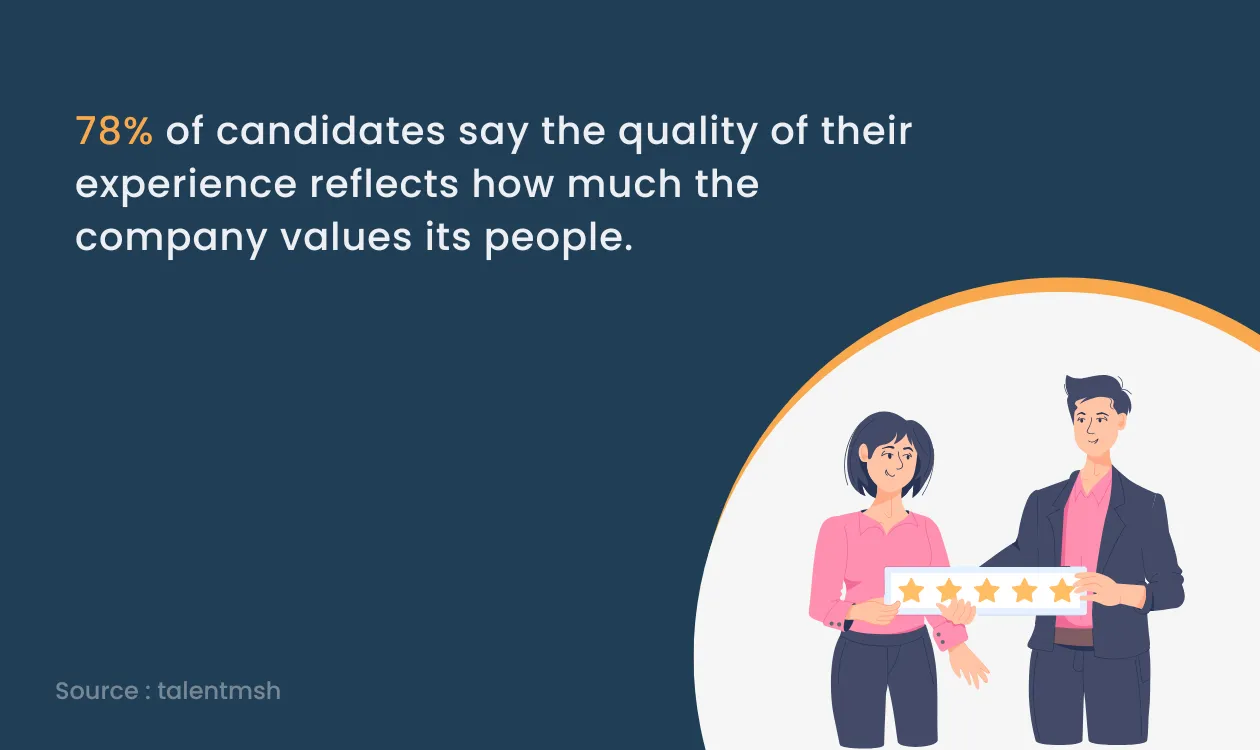
Companies that understand and optimise this journey tend to see higher acceptance rates, better cultural fit, and improved employee retention. In the modern recruitment era, it is no longer enough to post a job and wait for applicants.
Candidates expect personalised communication, transparency, and efficiency. They evaluate potential employers on the quality of the recruitment process, company culture, and how well their experience aligns with expectations. A well-structured candidate journey can turn passive candidates into enthusiastic hires while reducing the time and cost associated with recruitment.
Why the Candidate Journey Matters for Recruiters
Recruiters often focus on filling roles quickly, but focusing on the candidate journey changes this mindset from speed to quality. A smooth, transparent journey helps organisations:
- Attract top talent: Candidates are drawn to companies with professional, seamless recruitment experiences.
- Improve candidate engagement: Engaged candidates are more likely to accept offers and refer others.
- Enhance employer branding: Every interaction influences how the company is perceived in the job market.
- Reduce hiring costs: Optimising the recruitment journey minimises candidate drop-offs and reduces repeated hiring cycles.
- Increase retention: Candidates who experience a positive candidate journey are more likely to become long-term employees.
In 2026, companies that fail to provide an exceptional candidate journey risk losing talent to competitors who prioritise candidate engagement, speed, and personalisation. Recruiters must adopt a strategic, data-driven approach that balances efficiency with personalisation, ensuring every candidate feels valued and informed.
What Are the Key Stages of the Candidate Journey?
The candidate journey consists of multiple stages, each requiring careful attention and strategic planning. Let’s explore these stages in detail.
Candidate Sourcing & Attraction
Attracting the right candidates begins with effective sourcing strategies. Companies in 2026 are leveraging AI-powered tools, social media, job boards, and employee referrals to identify talent and even hire remote talents more efficiently across global markets. The key is not just to find candidates but to attract those who align with organisational values and job requirements.
Strategies for effective sourcing include:
- Building a strong employer brand that communicates culture and career growth opportunities.
- Using programmatic job advertising and AI tools to target high-potential candidates.
- Leveraging social media platforms like LinkedIn, Instagram, and emerging channels to showcase company culture.
- Encouraging employee referrals, which often yield high-quality candidates and reduce recruitment costs.
Candidates today research employers extensively before applying. By ensuring your sourcing strategy communicates transparency, inclusivity, and growth potential, organisations can capture attention and encourage high-quality applications.
Candidate Engagement & Experience
Engagement goes beyond communicating job details-it’s about creating a personalised and transparent experience. Recruiters must provide timely updates, clear expectations, and empathetic communication. A positive candidate experience directly impacts acceptance rates and employer branding.
Key elements of engagement include:
- Prompt and respectful communication throughout the recruitment process.
- Personalised interactions that make candidates feel valued.
- Transparency regarding timelines, selection criteria, and next steps.
- Incorporating candidate feedback surveys to continually improve the experience.
High engagement reduces candidate anxiety and keeps them invested in the recruitment process. Organisations that prioritise engagement create advocates out of candidates, even if they are not selected.
Assessments & Selection
The selection process is critical in ensuring candidates meet the role’s requirements and fit the organisational culture. Modern recruitment increasingly relies on AI-driven assessments, skill-based evaluations, and structured interviews.
Key elements of engagement include:
- Conducting skill-based tests to objectively measure capabilities.
- Using structured interviews to reduce bias and ensure consistency.
- Applying AI tools for resume screening and predictive performance analysis.
- Considering cultural fit alongside technical competencies to improve long-term retention.
A well-designed selection process ensures candidates are evaluated fairly and efficiently, improving the likelihood of successful hires and reducing costly turnover.
Offer-to-Acceptance Stage
Once a candidate is selected, the offer stage is where engagement and communication are crucial. A confusing or delayed offer can result in losing top talent to competitors.
Strategies for optimising this stage:
- Delivering personalised offers with clear compensation and benefits details.
- Maintaining active communication to address candidate queries.
- Highlighting growth opportunities and organisational culture in offer discussions.
- Leveraging digital offer platforms for faster and more efficient processing.
A smooth offer-to-acceptance process reflects professionalism and builds trust, increasing the chances that candidates will join and stay committed.
Onboarding & Early Engagement
Successful onboarding is the bridge between recruitment and retention. It sets the tone for a new employee’s experience, ensuring they feel integrated, productive, and motivated from day one.
Effective onboarding includes:
- Pre-boarding activities that familiarise new hires with company policies and culture.
- Structured onboarding programs that include training, mentorship, and team integration.
- Continuous feedback loops to monitor satisfaction and engagement.
- Using digital tools for paperwork, compliance, and communication to streamline the process.
A well-executed onboarding program reduces early attrition, accelerates productivity, and fosters long-term engagement.
What Are the Common Challenges Recruiters Face in the Candidate-to-Employee Journey?
Despite advances in technology, recruiters face several challenges:
- Talent shortages: High competition for skilled candidates makes sourcing difficult.
- Candidate ghosting: Lack of engagement can lead to candidates dropping out.
- Bias in recruitment: Unconscious bias can affect selection and diversity.
- Inefficient processes: Manual and inconsistent workflows can delay hiring.
- Retention issues: Poor onboarding and early engagement can lead to turnover.
Addressing these challenges requires a strategic, data-driven, and candidate-centric approach that balances technology with human interaction.
Another challenge is managing candidate expectations in a fast-moving job market. Candidates increasingly value speed, communication, and transparency. Organisations that fail to meet these expectations risk losing top talent to competitors.
Recruiters also face the challenge of maintaining a consistent employer brand across multiple channels. Every touchpoint, from social media to interviews, shapes candidate perception. Ensuring that this experience aligns with the organisation’s values requires careful planning, clear communication, and continuous monitoring.
How Can Recruiters Improve Retention After Hiring?
Retention begins during recruitment and continues through onboarding and career development. Strategies include:
- Providing continuous learning and development opportunities.
- Encouraging feedback and open communication.
- Fostering a positive organisational culture with recognition and engagement initiatives.
- Aligning roles with employee strengths and career goals.
- Using early check-ins during onboarding to resolve concerns promptly.
Investing in retention not only reduces turnover costs but also strengthens the company’s talent pipeline and overall productivity.
Which Key Metrics Should Recruiters Track to Measure Success?
To ensure a successful recruitment journey, tracking the right metrics is critical. Key performance indicators include:
- Time-to-hire: Measures recruitment efficiency.
- Offer acceptance rate: Indicates competitiveness and candidate satisfaction.
- Candidate satisfaction score: Reflects experience quality.
- Source of hire: Identifies which channels yield the best talent.
- Early turnover rate: Measures the effectiveness of onboarding and engagement.
Beyond these traditional metrics, recruiters should also track quality-of-hire, which combines the performance and cultural fit of new employees. High-quality hires often contribute more effectively, remain longer, and strengthen team performance. Monitoring engagement levels during the recruitment process also helps identify potential issues before they impact retention.
Using advanced analytics can also reveal information about the return on investment of hiring. Organisations can optimise budgets, more efficiently allocate resources, and make sure every recruitment decision is in line with strategic goals by assessing costs per hire, recruiter efficiency, and candidate pipeline health.
How Recruiters Can Use Technology to Streamline the Candidate Journey?
Recruitment in 2026 looks very different from just a few years ago. Speed, personalisation, and transparency have become non-negotiables, and recruiters who rely only on traditional methods risk falling behind.
Technology is no longer just a “nice to have” - it’s the backbone of a modern recruitment journey, helping teams connect with candidates faster, remove friction, and deliver a more engaging experience. Here are some of the most impactful ways recruiters can use technology to create a smoother candidate-to-employee journey
Applicant Tracking Systems (ATS)
An Applicant Tracking System is now the central hub of recruitment. It keeps candidate data organised, tracks progress at every stage, and ensures no one slips through the cracks. Many systems also integrate with other tools, making communication and scheduling seamless.
AI-powered screening
Manual resume reviews can be slow and biased. AI tools can quickly shortlist candidates based on skills and experience, freeing recruiters to focus on meaningful conversations and cultural fit rather than admin work.
Chatbots & Virtual Assistants
Candidates today expect instant responses. Chatbots can answer common questions, schedule interviews, or provide status updates 24/7, keeping candidates informed and engaged without extra workload for recruiters.
Predictive Analytics
With the right data, recruiters can forecast hiring needs, identify where candidates are dropping off, and measure which sourcing channels bring the best results. This helps refine strategies and reduces wasted effort.
Onboarding Platforms
The journey doesn’t end when an offer is accepted. Digital onboarding tools make paperwork effortless, provide early access to training resources, and help new hires connect with their teams before day one - building confidence and commitment.
Personalised Candidate Experiences
AI-driven platforms now enable recruiters to send tailored updates, job recommendations, and interview reminders. This personalisation shows candidates they’re more than just an application ID, building stronger connections from the start.
When used thoughtfully, these technologies don’t replace the human side of recruitment - they enhance it. Automating repetitive tasks frees recruiters to focus on what truly matters: building trust, understanding candidate motivations, and ensuring every hire feels valued.
In 2026, the organisations winning the war for talent are those that combine cutting-edge tools with genuine human engagement. By streamlining processes and delivering a transparent, personalised journey, recruiters can attract stronger candidates, reduce time-to-hire, and transform successful applicants into loyal employees.
Conclusion
The candidate journey is no longer a linear process but a dynamic, multi-stage strategy that requires careful planning, execution, and continuous improvement. From sourcing and engagement to assessment, offer management, and onboarding, every stage contributes to the overall candidate experience and eventual employee retention.
Recruiters who prioritise this journey, leverage technology, and monitor key metrics can build a strong employer brand, attract top talent, and foster long-term employee engagement.
By understanding and optimising this journey, organisations not only improve their recruitment efficiency but also ensure that new hires feel valued, engaged, and aligned with the company’s mission and culture. In 2026 and beyond, success in recruitment will belong to those who combine data-driven strategies, AI tools, and human-centric engagement, creating a seamless transition from candidate to productive employee.
iSmartRecruit supports these modern recruitment strategies, helping organisations streamline the candidate journey, reduce hiring time, and increase retention through innovative tools and insights.
Frequently Asked Questions (FAQs)
1. What is the candidate-to-employee journey?
It is the complete process a job applicant undergoes from application to full integration as an employee, emphasising experience, engagement, and retention.
2. How can technology improve recruitment?
AI, ATS, chatbots, and predictive analytics streamline sourcing, engagement, and onboarding while reducing bias and inefficiencies.
3. What are the key metrics to track recruitment success?
Time-to-hire, offer acceptance rate, candidate satisfaction, source of hire, and early turnover rate are critical indicators.
4. How can recruiters enhance candidate experience?
By providing personalised communication, timely updates, transparency, and empathetic engagement throughout the process.
5. What are the future recruitment trends for 2026?
AI-driven engagement, predictive analytics, remote hiring, enhanced candidate experience, and digital employer branding are shaping recruitment’s future.


